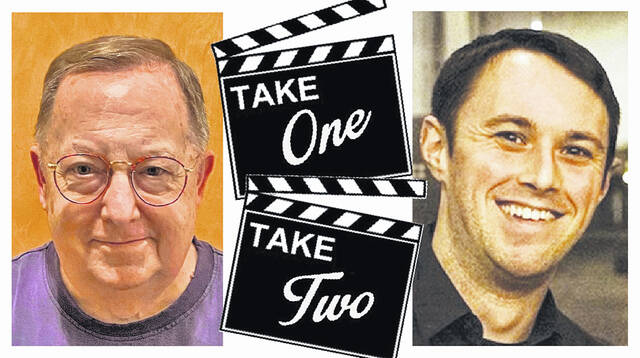
As the holidays approach and we reflect on our family and blessings, it’s the second chances we’re given that are often most rewarding.
The same applies to the films we watch. The development of tapes, discs and now streaming services provide a chance to reassess many movies that were critical or financial flops when first released.
The now beloved “It’s a Wonderful Life” (1946), often shown on local television stations at Christmastime, was originally savaged by critics and tanked at the box office. “The Wizard of Oz” (1939) lost over $1 million for MGM upon its initial release.
Here are a few movies that we view more amiable in hindsight.
Take One
Two of my favorite movies were released in the early 1980s with much anticipation, only to become financial flops that polarized critics. Today, both are considered masterpieces, often found on lists of the greatest American films.
“Blade Runner” (1982) is Ridley Scott’s dark dystopian vision, set in 2019 Los Angeles and populated by human beings and synthetic replicants. Harrison Ford stars as Rick Deckard, a “Blade Runner,” whose job is to destroy replicants who have violated human laws. The hook: replicants have been infused with memories and believe themselves to be human. Deckard falls hard for the sleek, ravishing Rachael (Sean Young), but is she a human or a replicant?
The story is based on Philip K. Dick’s novel “Do Androids Dream of Electric Sheep,” but don’t consider it a faithful adaptation. Now a science fiction classic that has arguably influenced more films from that genre than any other. There are seven different versions of the film available but the “Final Cut” version is still the best. Check out the equally-excellent sequel, “Blade Runner 2049” (2017).
The most notorious film of the 1980s was director Michael Cimino’s “Heaven’s Gate” (1980), which many film historians argue destroyed the New Hollywood movement of the ’60s and ’70s. With cost overruns in the tens of million dollars, the film spelled doom for its distributor, United Artists. New York Times film critic Vincent Canby called it “an unmitigated disaster.” Yet within its bloated nearly four-hour running time (the “Director’s Cut” — the original theatrical release is long out-of-print) is a beautifully composed story told with painstaking accuracy.
The plot follows the infamous Wyoming Johnson County war of the 1890s fought between powerful cattle barons and homesteading European immigrants. The bloody conflict is told through the eyes of a federal marshall (Kris Kristofferson), a deadly cattleman enforcer (Christopher Walken), their mutual immigrant love interest (Isabelle Huppert) and a key cattle baron (Sam Waterson).
Take Two
One of the strangest movies to emerge in a year chock full of them is Sydney Pollack’s “Castle Keep” (1969), a long reviled film by critics and audiences alike. Who can blame them? It features Burt Lancaster and Peter Falk romping around a medieval Serbian castle (painstakingly recreated with tacky styrofoam), a philosophically-engaged plot in which a Nietzschean subtext suggests that war is both meaningless and beneficial and gothic camerawork which belies a young director’s attempt to tie it all together.
This is a miserable failure on Pollack’s part — but wow, what a wonder to watch today. Avoid any attempts at coherence — just go along for the ride — and you’ll realize how magical, ambitious and mysterious all those disparate parts are. This is a bright, gleaming gem of 1960s counterculture wrapped up in a wartime period piece.
In honor of Steven Spielberg’s most recent foray into childhood excavation, “The Fabelmans,” I thought it may be prudent to confess that I’ve always been critical of his filmography, largely because of his self-acknowledged insistence on wholesomeness and borderline conservatism.
But over the years, I’ve come to appreciate the artist widely regarded as the greatest “mainstream” living filmmaker, and view his films to be part of a broader sense of who he is. In the mid-1990s, his filmography began a more malignant streak, culminating in the stately, restrained revenge film “Munich”(2005) a decade later.
But it was a far-out science fiction movie called “Minority Report” ( 2002) that was the farthest afield. Off the heels of another underappreciated and depressing fantasy, “A.I.”( 2001), “Minority Report” was the more violent successor that seemed to escape from Spielberg’s id. Revolving around Tom Cruise (perhaps his finest performance) as a future-crime investigator who is perpetually searching for his missing son, the film darkly chronicles the limits of free will with a stunning critique of government overreach.
Most viewed the film as malicious, confusing and disturbing upon release, with many failing to recognize the filmmaker whose work was so often predictably warm. But in a Gulf war-prepped decade, it seemed that Spielberg was simply keeping up with the times, his skills never sharper.
(This column is written jointly by a baby boomer, Denny Parish, and a millennial, Carson Parish, who also happen to be father and son.)

